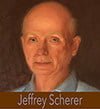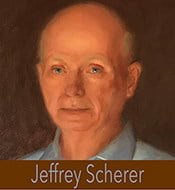2017.01.21 Day 1 Week 4
Starting my fourth week in Italy. Today was not a class day but I spent 6 hours finishing my 0-9 value scale and starting my “sphere” (6.5 cm in diameter) that utilizes all of the values in the scale (the sphere is not done in this photo.) The sphere is much more complicated than it looks. To get the 9 shades of gradation along a curving surface requires more subtly than I ever imagined. In this interim photo I have not laid in the ellipsoidal horizontal plane shadow.


Dinner was simple and tasty: roasted potatoes wth garlic and onions (another perk of living alone), Brussel sprouts and beets. The wine was again the Primitivo from Salento. Simple and close to earth–while listening to James Brown’s greatest hits.
2017.01.22 Day 2 Week 4
Sunday. A day of rest, walking, museum going and human anatomy drawing and reading. The morning began with a trip the Uffizi Gallery—of course one of the most art museums in the world. Apart from the very pushy Chinese tour groups it was relatively calm this morning. As the weather warms and the tourist start to descend, the museum becomes almost unbearable—so I am told. In any case, I had plenty of time with some wonderful paintings by Carravaggio, Da Vinci, Michelangelo, Titian, Guardiagrele, Lippi, Botticelli, Piereo dell Francsca, Ghirlandio, Bellini, Perugino, Credi, and Bronzino.
After more grocery shopping (to stock up for the week) I worked on my homework—drawing the torso and it’s associated anatomy. It is crucial for me to draw. Reading is not the way I can learn anatomy. While my drawings are crude, they are helpful for me to understand relationships, key “bony parts” (markers on the skin for painting), joints and lines of movement.
Dinner was really simple: organic whole wheat pasta with Bottarga di Orbetello in a parsley, garlic, shallot, leek and tomato sauce. Wine was a 2015 Santa Cristinia Toscana (Lea and I visited this vineyard a few years back.) Listening to This is the Day by the Giovanni Guide Trio Jazz Group.
2017.01.23 Day 3 Week 4 Class #11
Today was a pretty ordinary day. I continued my value studies and value scale on the sphere. I continued to work on Bargue number two. Turns out that Vincent Van Gogh did the Barge twice and Picasso did the exercises once. I am can see it in their work–now that I know this.
In the afternoon we continue with live figure drawing. Today was a male model so I had to adjust my proportions accordingly.
In the morning we had a nice lecture from the founder of the Academy, Michael John Angel (MJA). The topic was “capitura” which is a technique of painting that places an overall “wash” of raw umber over a sketch painting to establish the ground for the background color. Some of the technical and advice notes from the lecture:
- MJA’s medium for oil painting is 2 parts Liquin (brand name from Windsor and Newton), 1 part linseed oil and 2 parts turpentine
- He has begun experimenting with adding titanium dioxide dry pigment in oil paint in lieu of calcium carbonate.
- Preparing commercial oil paints requires more oil to mix than what it would take to bind the pigments. That means that oil “straight from the tube” is too “oily.” It is, therefore, necessary to reduce the oil content. One can put the oil paint straight from the tube on blotting paper (don’t use newsprint since the ink “never” dries and will pollute the oil paint; or add a dry ingredient to absorb the oil (like calcium carbonate or titanium dioxide (it is whiter.) Its crystal shape is “knife like” and thus it interlocks finer than calcium carbonate with its “rounded” crystals—which let more light through. It becomes more opaque as it binds together.
- No essential oils, cobalt drie or mineral spirits should ever be used with black oil paint.
- MJA’s preferred black mixture is 2 liquin, 1 oil and black.
- Raw Umber has 2X the oil as the cadmium oil paints
- If you heat Yellow Ochre dry pigment it becomes Earth Red (Iron Oxide) since the heat removes the water—creating essentially “rust.”
- The only thing to use to increase oil “flow” is mineral spirits then combined with essential oils
- Raw Umber requires a lot of oil to produce so it must first be diluted with mineral spirits. At this point then the medium can be reintroduced.
- Umber is a natural sicative (drying agent) as is cobalt, manganese and lead.
- Painting is not about “objects” at all. It is entirely about color shapes. There are NO arms or legs in your painting. It is also critical to understand that there should be NO edges in the painting. It is about relationships of values. If you need an edge you will end up with no shapes—which define the painting.
- Think about painting as “exploiting hints from nature.”
- MJA uses cadmium red and red umber with titanium white for basic skin tones. “All humans are shades of brown.” Raw Umber is actually orange—not red.
- When scrubbing it is crucial that the brush never leave canvas. Otherwise there will be streaks. It is also crucial to always have a soft edge—best done with the finger.
Dinner was simple: pasta with spinach, rocket, tomatoes and onions. Wine was Rèmole Toscana 2015.
2017.01.24 Day 4 Week 4 Class #12
This morning I continued to work on my value scale and sphere. In the afternoon we had a 3 hour lecture by the founder of the Angel Academy, Michael John Angel, on Venetian painting from 1475 to 1930. Interesting tidbits I did not know:
- El Greco was a student of Titian. Titian could not pronounce his name (Doménikos Theotokópoulos) so he called him ” The Greek.”
- The painters were first and foremost “professionals” meaning that the were painters for hire. Titian had as many as 150 assistants.
- Giovanni Antonio Canal was called Canaletto. He had an English broker (the ambassador to Venice) since at the time the English were the main “buyers” of art using money gained from their colonial adventures. He used a camera obscura to get his perspectives correct.
- The Italians liked giving their artist nicknames that were ironic. For example, Alessandro di Mariano di Vanni Filipepi was tall and thin. But his nickname, Botticelli, means short and round (named after a cask for wine.)
- Most of the Rocco ceiling paintings were done on wood panels in the studio and then nailed in place.
- Realism originally meant painting that depicted real life–not fabricated parlor settings.
In the evening was our second anatomy class. Today we studied the torso skeleton and muscle structure. Following the one hour lecture, we had a two hour live figure class to draw what we studied. The main goal was to learn how to accurately place the key landmarks on the torso; understand the geometry of the rib cage; and begin to learn the way the muscle groups telegraph on the skin.
2017.01.25-26 Day 5 and 6 Week 4 Class 13 and 14
I completed the 0-9 value scale drawing. I am now working on the sphere which utilizes the full 0-9 ranges. This exercise is critical since the numerical values are used in the classes as we begin our drawing classes.
Following this exercise we began a two-day pose. The purpose of this pose is to take us through the gestural, construction and articulation phases of live model drawing. Lessons that I learned in this exercise:
- Measurement at the macro scale is critically important for setting the correct pose. The major “bony” landmarks must be correctly positioned in three dimensional space. Otherwise, the horizontal, vertical and diagonal relationship will not be correct.
- Focusing on the micro is “comforting” and “safe” but wrong. It is crucial to slow down and measure. The longer you take the more you see. Our nature is try and “fill in the blanks” quickly so that we feel like we have accomplished something.
- Leave details out. Only show major shapes. In fact the only thing we are drawing are shapes. The drawing may look like a person (if you are reasonably competent) but that is not what we are drawing. We are drawing shapes.
- Check the overall widths and diagonals often.
- When something needs to be adjusted, step back and think about the consequences. It may seem that a shoulder needs to be raised but in fact the placement of the hand on a leg is culprit. Do not jump to fix the first thing.
I finished step one of my Bargue drawing number 2. The value 7 shadow is in place. Tomorrow I begin working on feathering the edges: dark to light. This will create the beginning of the form shaping.
On Friday (the 27th and 15th class day) I will work in the morning on the sphere and the Bargue drawing. In the afternoon I will be headed to Paris for the weekend. I will be going to see Les Temps Merovingiens show at the Cluny Museum, have dinner with an old friend and just soak up a bit of Paris. I need a break after 4 weeks of 10-12 hour days.













































































Recent Comments